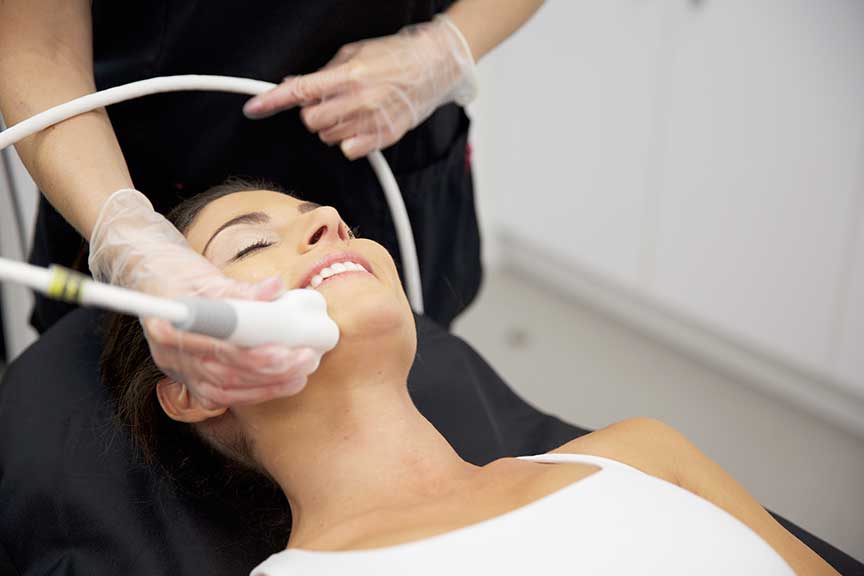
Top dermatologists near you talk about ‘how do photofacials work’
The human quest for beauty and preserving youthful looks has led to the discovery of some fascinating and effective treatments. Nowadays, different elements of nature i.e., ice, heat, and light are being used to treat certain skin problems are reverse the signs of aging. Photo facials is one such method that is used as a skin rejuvenating treatment. It uses different light-based technologies and light-emitting devices to treat hyperpigmentation, enlarged pores, wrinkles, fine lines, and acne scars.
Let us take a detailed look at photo facials, their types, working, and effectiveness in combating skin woes.
Types of Photofacials
All photofacials use some form of light. Following are the two most common types of photofacials:
- Intense Pulsed Light (IPL) facial
- Light-emitting diode (LED) facial
Their names indicate the type of light being used.
IPL Facial:
- It is also known as Pulsed Light Therapy. It makes use of broad-spectrum light which is emitted in pulses or short bursts through a handheld device. The device comes in direct contact with the skin. The penetration power of broad-spectrum light is high, so it is effective in treating damaged capillaries, sun damage, and acne scars.
LED Photofacials
These facials make use of different colors of the LED light. A handheld device is used to emit different colors which have varying effects on the skin. For e.g. blue light kills acne-causing bacteria whereas red light is said to stimulate the production of collagen which helps erase acne scars and reverse the signs of aging.
- LED light interacts with the upper layer of the skin and doesn’t go too deep into the lower layers. These facials are performed at medical centers, spas and can even be performed at home under professional guidance.
What is The Working Mechanism of Photofacials?
Both these facials interact with the skin and are absorbed by it. IPL facials are more intense and have a deeper penetration power. The light from IPL photofacial is absorbed by the hemoglobin and melanin that occur in the skin. Laser light damages the melanin which reduces its appearance on the skin. It also damages the hemoglobin which causes increased blood flow to the damaged area. As a result, the damaged melanin gets absorbed by the blood, and scars fade at a faster rate.
- LED photofacials use various lights for treating different skin issues. The working of green light is similar to IPL. It dissolves a higher concentration of melanin (i.e. hyperpigmentation) so that it can be absorbed faster. Red light stimulates collagen production and blue light acts as a bactericidal.
What Does Getting A Photofacial Feel Like?
For IPL facials, the dermatologist will prep your skin by applying a cool gel on your face. You will then be asked to wear dark glasses to protect your eyes from the glaring light. For LED facials, all you need to do is wear glasses and sit still for the aesthetician to perform the procedure.
- The sensation is that of slight warmth. They are both quite comfortable.
How long do photofacials take?
IPL photofacials require three to six sittings. Each sitting takes usually 20-60 minutes. The sittings are planned with a gap of 25 to 30 days.
- LED photofacials also require multiple sittings. The average number of sittings needed for performing this treatment is 4-5. For more severe issues, the number of sittings can go as high as 10-12. Each sitting takes 30-60 minutes.
For a complete list of photofacials that Euphoria Med Spa offers, please click here!
Fall special running through November 1, 2023 receive a cool peel and 3 photofacial treatments for only $600! Don’t miss this special offer.
Need a touch up? If you have already purchased a photofacial package and need a single session touch up, we are offering a touch up for only $175.
